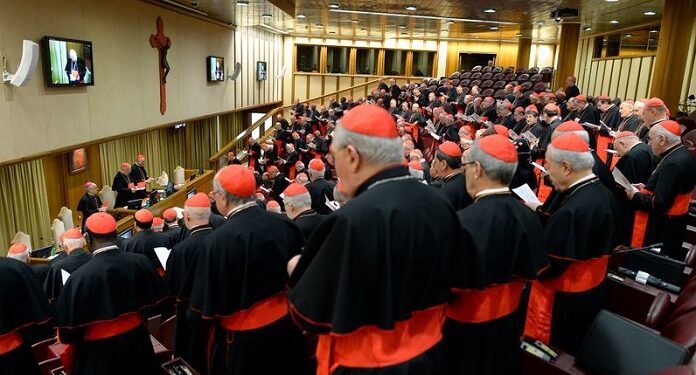Cardinals Set To Elect New Pope On May 7

Only five days ahead of the conclave, firefighters on Friday installed the chimney on the Sistine Chapel, which will release white smoke to announce the election of a new pope.
A total of 133 Catholic cardinals are set to convene beneath Michelangelo’s iconic frescoes in the 15th-century Sistine Chapel, located within the Apostolic Palace at the Vatican, to elect a successor to Pope Francis, who passed away on April 21.
Held behind locked doors, the conclave will signal to the world the outcome by burning ballots in a special stove, with the chimney emitting black smoke if no one has been elected, or white smoke if there is a new pope.
Cardinals from around the world have been called back to Rome following the death of Francis, an energetic reformer from Argentina who led the Catholic Church for 12 years.
Only those under the age of 80 are eligible to vote in the conclave, but ahead of the election, cardinals of all ages have been meeting daily to discuss the challenges facing the next head of the world’s 1.4 billion Catholics.
Cardinal Luis Antonio Tagle of the Philippines, Italy’s Pietro Parolin — who served as secretary of state under Francis — and Ghana’s Peter Turkson are among the favourites.
But an old Roman is saying that he who enters the conclave a pope, leaves a cardinal — a warning that the favourite rarely emerges as the winner.
“I think the Church is in prayer mode, but it must also put itself in surprise mode,” Cardinal Gregorio Rosa Chavez, 82, told reporters as he headed into Friday morning’s meeting.
“Remember what happened with Pope Francis — what a surprise!”
Among the crowds of tourists and pilgrims in St Peter’s Square on Friday morning, the installation of the chimney on the Sistine Chapel — a thin metal tube with a capped top — went largely unnoticed.
But many were aware that history is in the making.
“It definitely is a historic moment and it definitely feels special to be in Rome,” said Glenn Atherton, a Briton visiting from London.
“It feels like a once-in-a-lifetime thing,” he told AFP.
There are 135 cardinals eligible to vote in the conclave, but two have withdrawn for health reasons.
The conclave is due to begin at 4:30 pm (1430 GMT) on Wednesday, May 7, where the cardinals will take an oath to maintain the secrecy of the election on pain of excommunication.
That first day they will hold one ballot, with the winner — technically any baptized male, but in reality always one of their own — needing a two-thirds majority, or 89 votes, to win.
During the following days, they will hold two votes in the morning and two in the afternoon.
If a winner is elected, the ballots will be burned in the special stove with the addition of chemicals to emit white smoke to alert the waiting world to the decision.
If no candidate has enough votes during the first-morning vote, the cardinals will proceed to a second vote, and only after that point will the ballots be burned.
The afternoon session follows the same procedure — if a pope is elected, there will be white smoke, but if not, the cardinals will proceed to a second vote, and only after that will the ballots be burned.
If no pope is elected, the smoke that comes out of the chimney is black.
The ancient signaling system — still the only way the public learns whether a pope has been elected — used to involve mixing wet straw with the ballots to produce white smoke and tarry pitch to create black smoke.
After several episodes in which greyish smoke caused confusion, the Vatican introduced a new system in 2005.
At the last conclave in 2013, the Vatican said it used a mixture of potassium perchlorate, anthracene, and sulfur to produce black smoke and potassium chlorate, lactose, and rosin for white.
Two stoves stand in a corner of the chapel, one for burning the ballots and the other for the chemicals, with the smoke from both stoves going up a common flue, it said back then.
Details for the procedure of next week’s conclave have not yet been confirmed.





